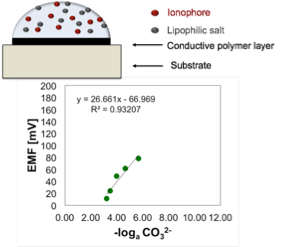Our group focuses on better understanding the principles controlling charge, mass and heat transport within polymeric matrices. The main goal is to establish a roadmap towards nano-structured, multifunctional materials with improved ionic conductivity, temperature regulating ability, nano-templating behavior, or nano-shuttling capabilites. Clean energy alternatives (such as fuel cells and solar cells), flexible optoelectronic devices, better energy storage, non-viral gene delivery vectors and “green” buildings are promising areas that will benefit from tailoring the materials properties via a precise control of their structure at the molecular and supramolecular scales. The interdisciplinary nature of this work allows students to acquire experience, not only in organic or polymer synthetic chemistry, but also in a wide variety of characterization techniques routinely used to study the materials they prepare. Furthermore, while striving to control and tailor the properties of these new compounds, they have the opportunity to closely collaborate with their peers from other disciplines working towards the same broad objective.
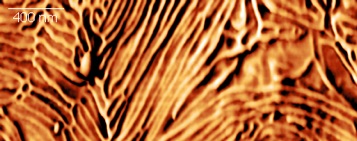
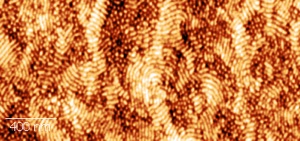
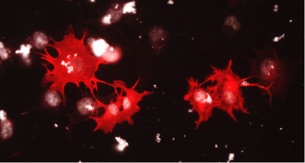
Specific research areas:
1. Ionic transport through polymeric matrices (Fuel cells, Lithium batteries and Dye sensitized solar cells). Development and widespread use of new alternative energy sources, such as high temperature proton exchange membrane fuel cells, lithium-ion batteries and dye sensitized solar cells, requires a better fundamental understanding of the nature of ion transport within polymeric matrices. Three substantial challenges face the extensive use of ion conducting membranes: The need to decouple mechanical properties from ionic conductivity, the low concentration of dissociated ions within most polymeric matrices and a relatively low mobility of the macromolecule enclosed ionic species. Our efforts focus on understanding the fundamental physico-chemical principles governing charge transport and on deriving structure-property relationships to help guide the design of new ion conducting components for water-free polymer electrolyte (PEM) fuel cells, lithium ion batteries and dye sensitized solar cells. This effort utilizes, tailorable, well-defined, model macromolecular systems as the underpinning for an integrated study of ion transport through polymer matrices.
4. Electronic conduction (Solar Cells, Flexible Electronics): We aim to develop improved semiconducting polymeric materials for optoelectronic applications, particularly photovoltaic systems, via careful control of the semiconducting phase nanostructure. These well-defined systems will be used to achieve a better understanding and characterization of charge separation and charge transport within semi-conducting polymeric matrices, essential requirements for the development of photovoltaic devices with increased energy conversion efficiency. The photovoltaic effort will be divided into design of polymer structures with tailored electronic properties (charge carrier mobility, band gap, etc.) and development of controlled nano-scale architectures to improve macroscopic charge separation.
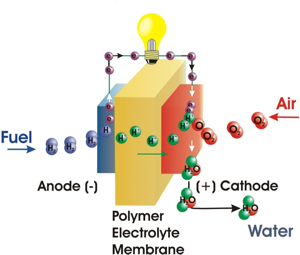




Research overview
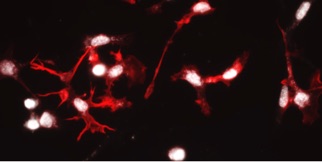
5. Non-viral vectors. We have synthesized a series of PEG-functionalized PEIs and, in collaboration with the Bellin lab at Holy Cross college, have tested their efficacy as non-viral transfection agents. Below are two examples of successful transfection of the gene for red fluorescent protein in Cos7 and 3T3 cells.




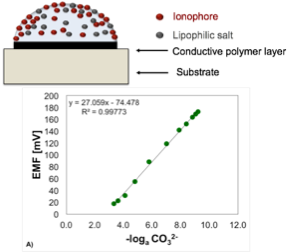

2. Phase change materials (PCM) can serve as a heat reservoir in walls, fibers and coatings, thus helping regulate the temperature inside vehicles, buildings and people wearing them. The main challenge for their utilization is the need for mechanically robust, high latent heat systems. Our goal is to develop a series of polymeric systems that can efficiently and reversibly undergo phase transitions around room temperature. Below are a few thermograms illustrating the thermal behavior of some of our materials.


-
3.Block copolymer templates. Well-defined inorganic or hybrid
nanoparticles have a wide range of interesting applications in fields
such as optics, drug delivery, electronics and catalysis. Our goal is to
use a series of dihydrophilic block copolymers as templates to
hydrothermally produce nanoparticles with different shapes, sizes and
aspect ratios.


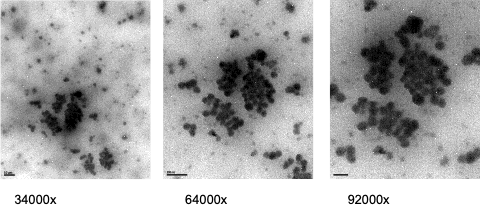
6. Sensors (Ion-selective electrodes, ISE’s): In collaboration with the McGraw and Radu labs, we seek to better understand the effect of polymer structure on the ion transporting ability and the durability of the ISE’s active layers. More details about the development and end-use of these sensors can be found in the McGraw group’s web page and the Radu group’s webpage.
